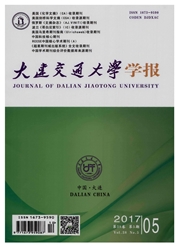

 中文摘要:
中文摘要:
针对高速动车通过曲线时轮轨磨耗问题,利用现场实际测量的不同磨耗阶段动车车轮型面,建立高速列车通过曲线的多体动力学模型和曲线段轮轨接触的有限元模型,计算了不同磨耗程度车轮通过曲线时的磨耗功率、垂向、横向动载荷变化规律,并且对比了动载荷和理论载荷下轮轨间接触等效应力.分析结果表明:动车通过曲线时轮轨间的磨耗功率、横向力和横向蠕滑力等参数都随着车轮型面磨耗程度的增大而增大;标准型面到踏面磨耗量达到0 .54 mm的过程为剧烈磨耗阶段,踏面磨耗量由0.54 mm增加到1.5 mm过程过为磨耗稳定期;可以根据磨耝型面对车轮型面进行优化,从而延长动车车轮的稳定磨耗阶段.
 英文摘要:
英文摘要:
Aiming at analyzing the wear of wheel and rail when high-speed trains pass through curve rail, the wheel profiles on different wear stages collected on the field are applied to establish vehicle dynamic model and finite element contact models. The changing rules of friction power, wheel/rail vertical force and lateral force are calculated, and the Equivalent Von Mises of wheel/rail under the effect of the dynamic load and the axle load are compared. The results show that with the wearing of the wheel profile, the friction power, wheel-rail lateral force and lateral-creep force are increased in the curve, and the standard profile of the wheel is worn quickly. It is called the stage of fierce wearing when the profile ranges from the standard to the abrasion loss of tread becoming 0. 54 mm. The stage of stable wearing is that the profile of the 0? 54 mm abrasion loss of tread is worn to 1.5 mm. The worn 1 profile of wheel could be taken into account as the reference profile to design the wheel profiles for extending the service life of the wheel.
 同期刊论文项目
同期刊论文项目
 同项目期刊论文
同项目期刊论文
 期刊信息
期刊信息
